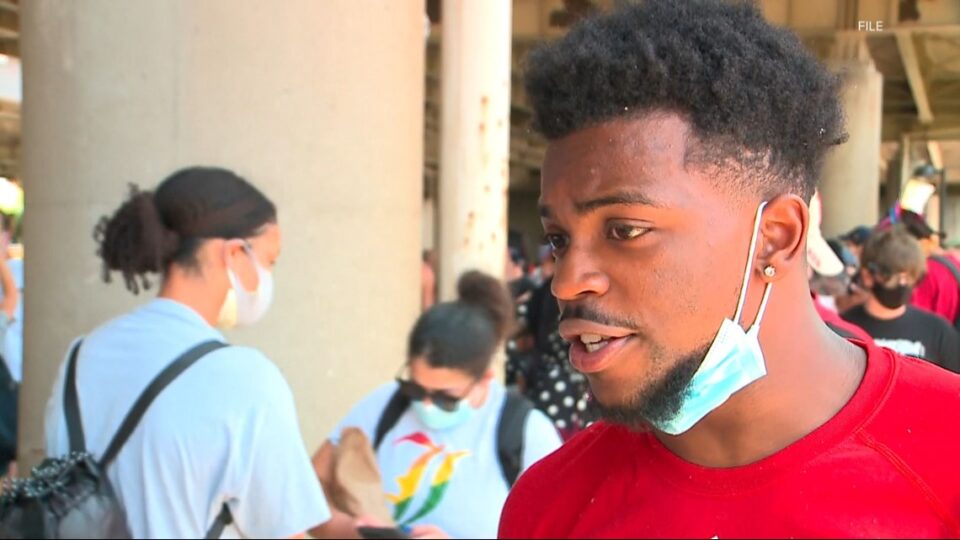Bullet Grazed Shirt of Louisville Mayoral Hopeful
Black European: West’s Weakness Is Complacency
Philly Guild Invokes Inquirer’s Confession of Racism
Baltimore Sun Issues Mea Culpa for Racist Past
Black Newspaper Carrier Severely Beaten in La.
Passings:
Harn Lay, Defiant Cartoonist
Guillermo I. Martinez, Prominent Miami Voice
Jay Price, Radio Man and Newspaper Founder
Miguel Rodriguez, a Face of COVID
Short Takes: “The Boondocks”; Roland S. Martin; banks and racial wealth gap; diversity in broadcast ownership; Katie Phang; media training center at HBCUs; multimedia careers in automotive industry; Libor Jany; James Anderson; journalist-of-color conventions; Julian Brave NoiseCat and Ryan Christopher Jones;
Washington Post hiring surge; fund-raiser for reporter’s family; popularity of podcasts; Ricardo Pimentel; exits at WHYY; Terry Tang; whites on Jet magazine covers; Arthur Cribbs; new Howard U. publication; Brandon Bell; Baltimore Sun’s response to Tucker Carlson; Will Lee; Facebook vs. Frederick Douglass; Somini Sengupta; Keisha Lance Bottoms;
Justin Fairfax; Darran Simon memorial; Quiana Burns; Cari Champion and Jemele Hill; Emmett Till; Scripps Howard Foundation grants; resettled Afghan journalists; Israel-apartheid link; African fact-checking nonprofit; assault on journalist in eSwatini, formerly Swaziland; journalist killing in Chad.
Hpmepage photo: Quintez Brown, credit WHAS-TV
Support Journal-ismsLouisville’s WHAS-TV asks, “Why was Quintez Brown released? Answering your questions about the bail process in Kentucky.” The story also became national news. (Credit: YouTube)
Bullet Grazed Shirt of Louisville Mayoral Hopeful
A 21-year-old Black college student whose editorial columns for the Courier Journal in Louisville, Ky., were praised as “brilliant” is being held as a suspect in the attempted shooting of a Jewish mayoral candidate.
Quintez Brown’s community activism in the city where Breonna Taylor was killed, and the posting of his bail by a local affiliate of Black Lives Matter have led to vitriol hurled in his direction even as others plead for attention to Brown’s mental health.
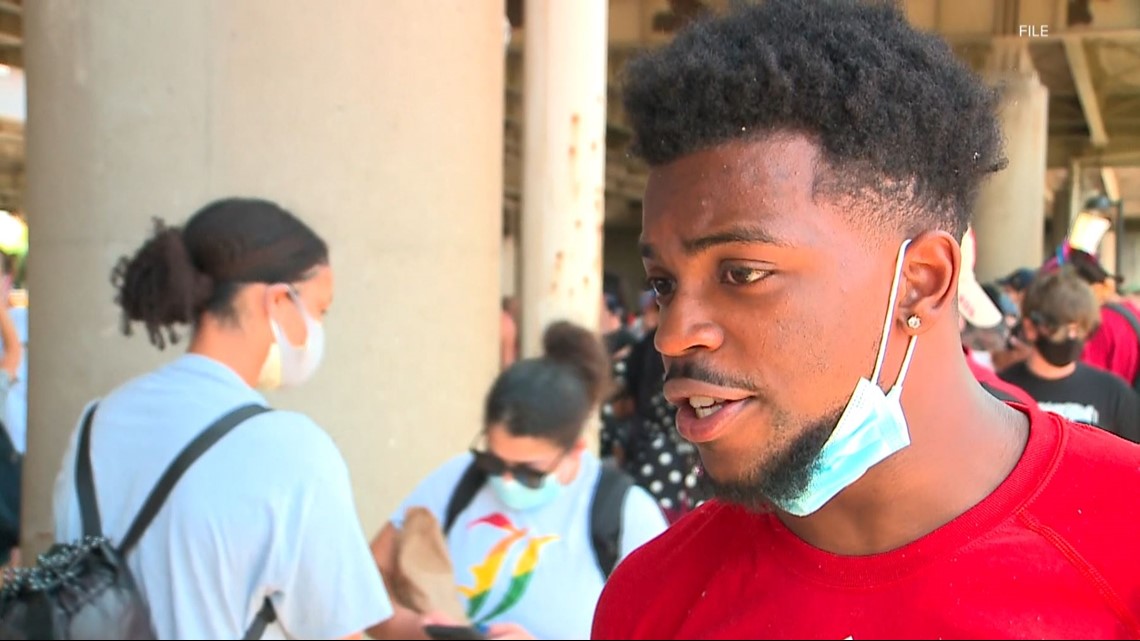 “Quintez Brown (pictured) was an intern/contributor for The Courier Journal from 2019-2021,” Mary Irby-Jones, Courier Journal executive editor, said Thursday in a statement to Journal-isms. “We are relieved no one was injured and send our thoughts to the impacted families.”
“Quintez Brown (pictured) was an intern/contributor for The Courier Journal from 2019-2021,” Mary Irby-Jones, Courier Journal executive editor, said Thursday in a statement to Journal-isms. “We are relieved no one was injured and send our thoughts to the impacted families.”
“Brown was charged late Monday with attempted murder and four counts of wanton endangerment after mayoral candidate Craig Greenberg was shot at in his campaign headquarters that morning,” Andrew Wolfson and Bailey Loosemore reported Monday, updated Wednesday, for the Courier Journal.
“Greenberg and four members of his staff were at a meeting in his campaign office in the Butchertown Market building when a man entered the doorway about 10:15 a.m. and began shooting at him, the candidate said Monday.
“A staff member near the door managed to ‘bravely’ get it shut, Greenberg said, and others moved tables in front of the door as the suspect fled.
” ‘I’m very fortunate to have a great team of great people who responded in that way,’ Greenberg said.” He added at a late afternoon news conference, according to another Courier Journal report, “My team is blessed no one was physically injured today . . . despite one bullet coming so close that it grazed my sweater and my shirt, no one was physically harmed and we’re extraordinarily grateful for our safety.”
Wolfson and Loosemore continued, “A police report says a man later identified as Brown fired a 9mm Glock handgun in the office.
“Officers found a man matching the suspect’s description less than half a mile away about 10 minutes later, carrying a loaded 9mm magazine in his pants pocket, according to the arrest report. . . .
“Surveillance video from the building showed the suspect wearing clothes matching Brown’s and carrying a matching bag, the report said.”
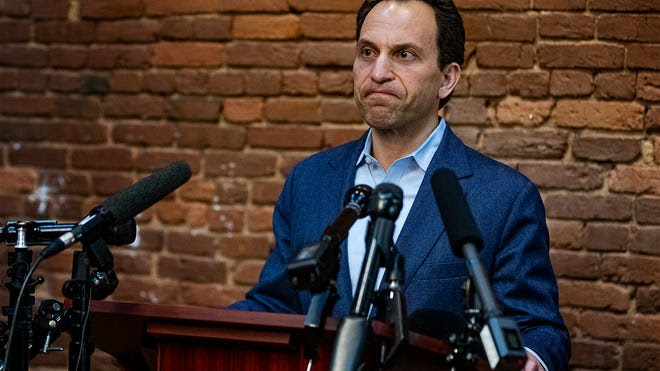
“Brown was freed around 7:30 p.m. Wednesday after the money was put forward by the Louisville Community Bail Fund, a local group that raises money to free defendants in criminal cases and connect them with pretrial support resources, Lucas Aulbach reported Wednesday, updated Friday, for the newspaper.
“His attorney, Rob Eggert, told The Courier Journal earlier Tuesday his client is ‘severely mentally ill and needs treatment, not prison.’
” ‘Brown appeared to have had ‘a mental health breakdown and hasn’t slept for days or weeks,’ Eggert said.”
 Still, Scott Jennings (pictured), a Republican adviser, CNN political contributor and partner at a public relations firm, wrote in the Courier Journal, “This is a reckoning moment for Louisville. We must snap out of this alternate reality, discuss these truths openly, and stop justifying and rationalizing violence for those who want instant political gratification. In some way, Brown’s alleged attempt at murdering Greenberg is the logical conclusion of the 2020 protests, and the natural culmination of the kinds of influences to which he had been exposed.
Still, Scott Jennings (pictured), a Republican adviser, CNN political contributor and partner at a public relations firm, wrote in the Courier Journal, “This is a reckoning moment for Louisville. We must snap out of this alternate reality, discuss these truths openly, and stop justifying and rationalizing violence for those who want instant political gratification. In some way, Brown’s alleged attempt at murdering Greenberg is the logical conclusion of the 2020 protests, and the natural culmination of the kinds of influences to which he had been exposed.
“For such a young person, Brown had lived a very public life. He wrote for his college paper and The Courier Journal. He appeared on MSNBC. He met several progressive luminaries, like Barack Obama, Al Sharpton and Kentucky Senate candidate Charles Booker.
“He was showered with attention and, somewhere along the way, taught to deeply mistrust Republicans, white people and institutions. And that he would be rewarded with more attention if he eloquently expressed those views. . . .”
Similar sentiments were posted on social media, with some saying that the University of Louisville student should be charged with a hate crime, as Greenberg is Jewish. Matt Goldberg, director of community relations for the Jewish Federation of Louisville, said only that he and others are “certainly all waiting to find out what this person’s motivations are.”
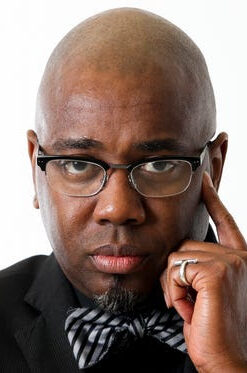 Ricky L. Jones (pictured), is professor and chair of the Pan-African Studies department at the University of Louisville, wrote in his own Courier Journal column, “Many will now see Quintez as little more than a pariah tainted by venom and his study of nationalism and Pan-Africanism. He’s already being characterized that way and everyone from local media to the NRA [is] piling on. They will freeze him in time as nothing more than a vicious criminal and potential killer undeserving of any love or consideration.
Ricky L. Jones (pictured), is professor and chair of the Pan-African Studies department at the University of Louisville, wrote in his own Courier Journal column, “Many will now see Quintez as little more than a pariah tainted by venom and his study of nationalism and Pan-Africanism. He’s already being characterized that way and everyone from local media to the NRA [is] piling on. They will freeze him in time as nothing more than a vicious criminal and potential killer undeserving of any love or consideration.
“They will not talk about the fact that Quintez was among the minority of young Black boys who make it to college. They will not talk about the fact that he wasn’t just a student, he is gifted beyond description. They never sat with him. They never spoke with him. They never saw him smile or troubled by the suffering of others. I did.
“I met young Quintez Brown when he was in high school. He was a star! He didn’t strike me as a kid who would yearn to attend an Ivy League school. He was too good and conscious for that. I pictured him going off to an elite HBCU like Morehouse or Howard. I was surprised when he stayed at home and attended the University of Louisville. He said he felt called to remain at home. “Help is needed here, Doc. We can’t all leave,” he smiled. He was so incredibly committed to his hometown.”
A Friday statement cosigned by eight activist and advocacy organizations, including Black Lives Matter Louisville and the Louisville Community Bail Fund, condemned the shooting and reiterated the belief that Brown needs “direct mental health support.”
“As many activists and organizers discover, battling racial trauma as a young person is hard when many of our communities don’t know how to practice healing, and this work is difficult,” the statement reads, in part.
Brown disappeared for about two weeks last year. He was found on a park bench in New York, said Eggert, his attorney, the Courier Journal reported.
While Brown was missing, a Courier Journal colleague posted on social media, “As an intern, Quintez sat in on Editorial Board meetings, and his questions for guests were always on point.”
Brown’s columns had such headlines as, “White power is America’s endless pandemic. Without a cure, more people will die“; “A quest for freedom: The diary of a young Black man raised in Louisville’s West End“; and “Black people can’t swim in Louisville, and it’s putting kids at risk.”
Meanwhile, Brown, also an independent Metro Council candidate, is subject to home confinement.
The Courier Journal Wednesday ran the headline, “Mayor hopeful Greenberg doesn’t want his shooting to divide Louisville,” adding, “It’s already begun.”
- Heather Fountaine, WHAS-TV, Louisville: Who is Quintez Brown? | Learning more about the man accused in the shooting at Louisville mayoral candidate Craig Greenberg’s office
- Ben Tobin, Courier Journal, Louisville: Kentucky politicians: Attack on Louisville mayoral candidate Craig Greenberg ‘terrifying’
Black European: West’s Weakness Is Complacency
As artillery fire escalates in eastern Ukraine and President Biden says Russian President Vladimir Putin has made a final decision to invade, a Black correspondent in Europe says the West might have emboldened Putin with its complacency.
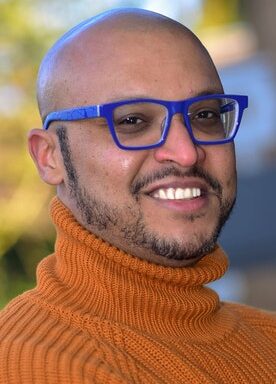 “After decades of enjoying safety and prosperity that’s virtually unmatched anywhere else in the world, the West’s pain threshold is low,” Remi Adekoya (pictured), a politics professor who has written for Britain’s Guardian newspaper and is former political editor of the Warsaw Business Journal, contended Tuesday.
“After decades of enjoying safety and prosperity that’s virtually unmatched anywhere else in the world, the West’s pain threshold is low,” Remi Adekoya (pictured), a politics professor who has written for Britain’s Guardian newspaper and is former political editor of the Warsaw Business Journal, contended Tuesday.
“Some may feel tempted to blame ‘generation snowflake’ for this weakness. But, while young Fins, for instance, are indeed significantly less likely than older Fins to be willing to suffer to defend Ukraine, younger French and German citizens are more willing to make such sacrifices than older generations. This is no straightforward generational divide.”
Noting that a January survey in seven European nations showed a clear majority, 62%, believe Nato should defend Ukraine if it is invaded by Russia, Adekoya wrote, “For Putin and his circle, who will be following such surveys (as will European governments), they are evidence of the weakness of modern-day Western societies who generally just want to be left alone to continue enjoying their high standards of living. Knowing that true democracies have to be governed by public opinion, Putin will likely see this risk aversion as encouragement to invade.”
Adekoya, whose father is Nigerian and his mother Polish, grew up in Nigeria. He messaged Journal-isms, “I am part Polish and lived in Poland for 19 years so I know the region and its dynamics quite well.” Last year, he authored “Biracial Britain: A Different Way of Looking at Race.“
Adekoya continued in Tuesday’s piece for unherd.com, “The Ukraine crisis . . . is not an anomalous conflict, but the beginning of a future for which Europe appears utterly unprepared. The continent has had it so good for so long, it has come to take everything it has for granted, including its security — which is gravely threatened by that very complacency. This century will test the West in ways it hasn’t been tested in a long time. It can only survive with the kind of fight it seems resolutely determined to avoid.”
- Journal-isms: Black Journalist in Poland Breaks Down Trump’s Visit (July 8, 2017)
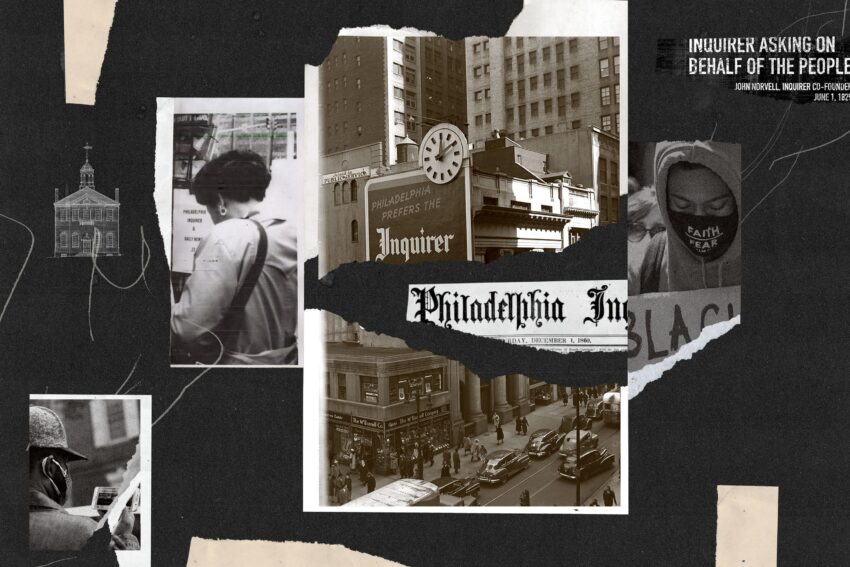
Philly Guild Invokes Inquirer’s Confession of Racism
No sooner had The Philadelphia Inquirer begun a historic look at how the newspaper had failed the Black community since its 1829 founding than the News Guild filed a grievance charging that a Black Guild member “is paid less than a white colleague with less experience performing the same job.
“For months, the Guild has attempted to get the company to correct this inequity but it has refused to do so. . . .”
In fact, the Guild announcement cited the series, “A More Perfect Union,” which began Tuesday with a 6,400-word examination of the Inquirer’s past by Black journalist Wesley Lowery under the headline “Black City, White Paper.”
Although newspapers serve circulation areas that go beyond city limits, the inaugural piece, written by Lowery and supervised by journalist Errin Haines, neither of whom are Inquirer employees, focuses on how the newspaper has ill-served Black Philadelphians.
Robert “Bob” A. Thomas became the paper’s first Black full-time staff reporter in 1954, and reporter Maida Odom arrived in 1978 after stints at two Ohio newspapers.
“More than 65 years after Thomas joined The Inquirer staff and 15 years after Odom left, Black Philadelphians remain underrepresented both on its staff and within its daily news report,” Lowery’s account says. “Just as troubling, the professionals who inherited [the Inquirer’s stated] movement toward a newsroom for all continue to cite a persistent white sensibility and lens that governs what coverage exists of Black people.
“On the day George Floyd died, The Inquirer employed just a single Black male on its news desk, although Philadelphia is 40% Black. An audit conducted in 2020 found that 74% of newsroom staff identified as white, less than 12% identified as Black, and that three out of every five people quoted in articles were white. . . .”
The outlines of American newspaper racism have been documented in other recent acknowledgements of guilt, such as by the Los Angeles Times, the Kansas City Star and the Baltimore Sun (see next item), but the particulars at the Inquirer make this account singular.
For example, many newsrooms yelled out “boy!” to fetch all copy boys, the go-to newsroom assistants, until the civil rights movement prompted a change to “copy!” and then to the term “copy aide.” But it wasn’t well known that Acel Moore, a founder of the National Association of Black Journalists, “Early in his tenure . . . had to take an Inquirer editor outside and explain that he would not be responding to ‘boy.’ ”
Or that Odom proposed and wrote a piece about contralto Marian Anderson, only to see it published under an editor’s byline instead of hers. “When she demanded to know how this had happened, Odom was told the copy desk assumed her editor had rewritten the piece.”
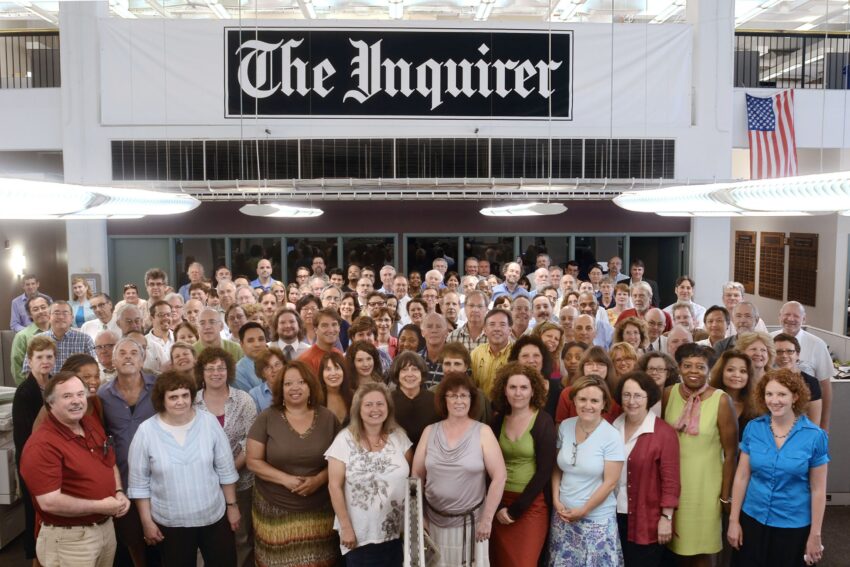
The Inquirer’s attempts at redress include:
- As of the beginning of this year, “seven of the nine desks in the newsroom had an editor of color,” and the Inquirer is “aiming for its newsroom to be 35% minority journalists by the end of 2022,” according to Jameel Rush, vice president of diversity, equity and Inclusion.
- “The newsroom set up a series of committees, charged with reviewing its editorial policies and stated values around issues including objectivity and fairness. The Inquirer changed its policy to be more selective about publishing mug shots and crime briefs. Desk editors were asked to facilitate staff discussions about topics such as the ways that racial or socioeconomic bias can show up in the paper’s coverage.”
- “The paper created and distributed an anti-racism workflow guide, which asks reporters and editors to consider whose perspectives and experiences are being centered in a given story and whether or not they’ve fully considered how their own personal experiences or bias may have impacted their framing. And the staff launched a new Slack channel in which reporters and editors can seek pre- and post-publication feedback on coverage of sensitive issues, such as stories that touch on race, gender, and sexuality,” Lowery reported.
- “The paper also settled on a new set of racial equity commitments, vowing to affirmatively oppose systematic racism, avoid extractive journalism and place current events in historical context that doesn’t erase generations of inequality. (‘Our journalism is for and with the communities we cover, not merely about them,’ reads one of the new value statements.) The Inquirer has declared that it must reflect the demographic diversity of the region it covers; and that the unique and diverse life experiences of its reporters are an asset, not a liability, to the paper’s credibility.”
The News Guild nationally has declared pay inequities as a priority. The Philadelphia unit wrote, “In order to move forward, the paper must do more to eliminate the discriminatory practices and the racist culture that permeate its foundation. Studies, content audits and cultural competency sessions are just a start to begin to scratch the surface. It is time to do more than just talk the talk, but walk that walk. An easy place to start is with salaries. Pay minorities fairly, in line with their white counterparts who are performing the same job but receiving higher compensation. It’s the right thing to do.”
- Kristen Chick, Nieman Reports: Want Diverse Newsrooms? Unions Push for Pay Equity As a Path Forward (Sept. 3, 2020)
- Elizabeth H. Hughes, Philadelphia Inquirer: From the publisher of The Inquirer: An apology to Black Philadelphians and journalists
- Elizabeth H. Hughes and Gabriel Escobar: Today, we will formally announce and launch “A More Perfect Union” (May 5, 2021)
- Anna Orso and Jesenia De Moya Correa, Philadelphia Inquirer: Inquirer has overwhelmingly white newsroom and its coverage underrepresents people of color, report says (Feb.12, 2021)
- Margaret Sullivan, Washington Post: The Philadelphia Inquirer set out to become an ‘anti-racist’ newspaper. That meant taking a tough look at its history.
- Nigel Thompson, Al Dia News, Philadelphia: Gabriel Escobar: Bucking a Legacy (Oct. 10, 2021)
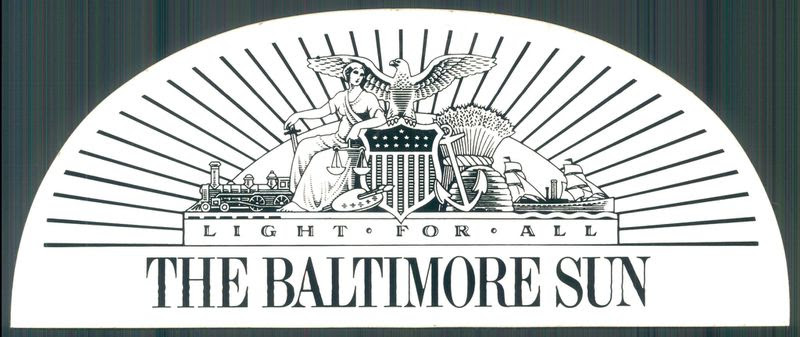
 “We are deeply and profoundly sorry: For decades, The Baltimore Sun promoted policies that oppressed Black Marylanders; we are working to make amends.”
“We are deeply and profoundly sorry: For decades, The Baltimore Sun promoted policies that oppressed Black Marylanders; we are working to make amends.”Baltimore Sun Issues Mea Culpa for Racist Past
The Baltimore Sun Friday joined the list of metro newspapers acknowledging their racist past and listed the steps it has taken to atone.
The newspaper’s founder, Arunah S. Abell, “was a Southern sympathizer who supported slavery and segregation. And this newspaper, which grew prosperous and powerful in the years leading up to the Civil War and beyond, reinforced policies and practices that treated African Americans as lesser than their white counterparts — restricting their prospects, silencing their voices, ignoring their stories and erasing their humanity,” the Sun declared, lifting its paywall to allow greater access.
The Los Angeles Times and the Kansas City Star are among newspapers that conducted similar mea culpas, both in 2020.
Members “of The Sun’s editorial board and its Diversity Committee, made up of staff volunteers, consulted the paper’s archives and several other archives online, including newspapers.com and ProQuest, which we accessed through the Baltimore County Public Library. We found appalling coverage that clearly furthered prejudice and alienated many of our readers.
“Among the paper’s offenses:
- “Classified ads selling enslaved people or offering rewards for their return, the first of which appeared just two months after the paper’s launch in May 1837.
- “Editorials in the early 1900s seeking to disenfranchise Black voters because, as The Sun opinion writers wrote, ‘the exclusion of the ignorant and thriftless negro vote will make for better political conditions’ and to support racial segregation in neighborhoods to preserve what Sun writers called the ‘dominant and superior’ white race. . . .”
The editorial also said, “The paper’s prejudice hurt people. It hurt families, it hurt communities, and it hurt the nation as a whole by prolonging and propagating the notion that the color of someone’s skin has anything to do with their potential or their worth to the wider world.
“The Sun’s bigotry also hurt its business. It cost the paper readership and community credibility, particularly in Baltimore City, where the African American population swelled from about a fifth of residents when Abell founded the paper, to more than 60% today. Distrust of The Sun has been handed down through generations of Black Marylanders, deservedly so.
Among other remedies, the Sun’s list included
- “Nurturing a talent pipeline to broaden the pool of applicants we promote and hire from: From 2018 to 2021, the percentage of non-white people who make up the newsroom rose from 20.7% to 26%, and of the 26 people we’ve hired over the past two years, 13 of them — 50% — have been people of color.
- Partnering with the Robert C. Maynard Institute for Journalism Education, a nonprofit training organization, to provide diversity and bias education for the staff, and to audit content across Baltimore Sun Media properties to gauge how well our reporting and opinion coverage reflects the variety of race, class, gender, generation, geography and sexual orientation in our communities.
- “Forming outreach committees to engage with groups we have inadequately served in the past to find out how we can do better. Among those contacted were Black funeral home directors, some of whom told us they didn’t believe we would welcome their input or feature news obituaries of African American residents. . . .”
“Our approach today, unlike that of the country’s ‘colorblind’ era of the 1980s and ‘90s, is to actively see the differences among us and work to understand: why they exist, what they mean to whom and why, whether they’re real or perceived, and whether they should be honored or struck down. . . .”
- Trif Alatzas, Baltimore Sun: A note from The Baltimore Sun’s publisher and editor-in-chief
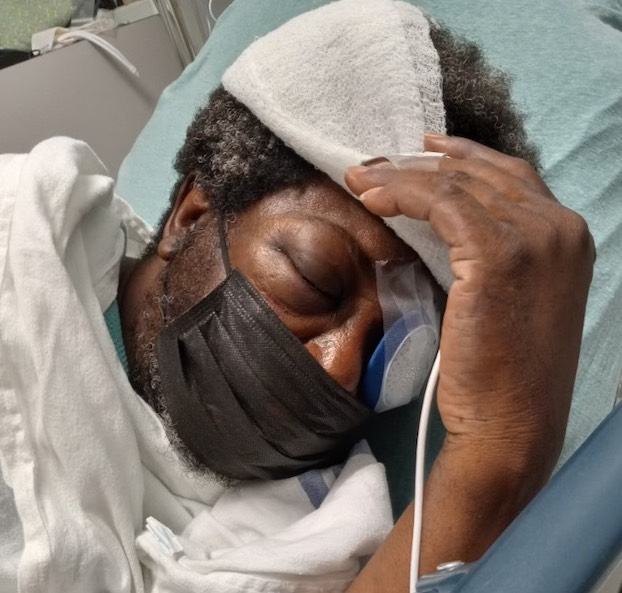
Black Newspaper Carrier Severely Beaten in La.
Two white Louisiana men are due in court Tuesday, charged in the severe beating a 67-year-old Black newspaper carrier as he was hand-delivering a newspaper to the door of a customer, Pamela Sleezer reported for the American Press in Lake Charles, La.
The state filed Bills of Information with the 30th Judicial District Court, formally charging 32-year-old Douglas Paul James and 24- year-old Dillon Matthew James with one count each of second-degree battery for the Dec. 17 beating of Woody Blanks, 67.
“Vernon Parish District Attorney Terry Lambright said he believes the charges fit the circumstances,” Sleezer reported Feb. 1.
“The incident occurred at about 3 a.m. in Rosepine, according to reports. Blanks said he had dropped off the newspaper at the homeowner’s door because the homeowner had mobility issues and could not easily make the walk down his driveway to his mailbox. Blanks said it was a request he had received many times, and had no problem stepping out into the cold that morning to assist the customer.
“But as he turned to walk back to his waiting vehicle, he said he was confronted by a group of men who questioned him about what he was doing on the property. Blanks said he tried to explain, but was ‘blindsided’ almost immediately and knocked to the ground.
“ ‘They kept hitting me,’ Blanks recalled.
“The homeowner was eventually able to call off the attackers, at which time Blanks was able to escape to his vehicle and leave the area, driving to Rosepine Police where he reported the incident.
“The assault left him with serious injuries to his face and eyes. After multiple surgeries, Blanks has been told he may never regain full vision.
“The incident has continued to affect the surrounding community, and Sheriff Sam Craft said he understands that emotional response.
“ ‘I have spoken many times with the victim’s family and I understand their feelings and concerns. It was a horrible thing that happened,’ Craft told the American Press . . . .
“Both men have claimed the attack was in response to what they called a prowler that had been at the homeowner’s property in the days before the incident. Craft said they told investigators they wrongly believed Blanks was the prowler.
“Craft said he is aware that some have questioned if the attack was racially motivated; Blanks is black and his attackers are white. He said he does not believe that race played a part in the attack. . . . “
Last month, Travis McMichael, 35, and his father Gregory McMichael, 65, both were sentenced to life in prison without the possibility of parole in the shooting death of Ahmaud Arbery , 25, in Brunswick, Ga. William “Roddie” Bryan, 52, who filmed the attack, was sentenced to life in prison with the possibility of parole. They said they suspected that Arbery, a Black man jogging through their neighborhood, was a thief. The men are now defendants in a federal hate-crimes trial; closing arguments begin Monday.
- Jim Brunner and Lewis Kamb, Seattle Times: Pierce County investigation report: Sheriff Ed Troyer violated policies in encounter with newspaper carrier (Oct. 26, 2021)
Passings
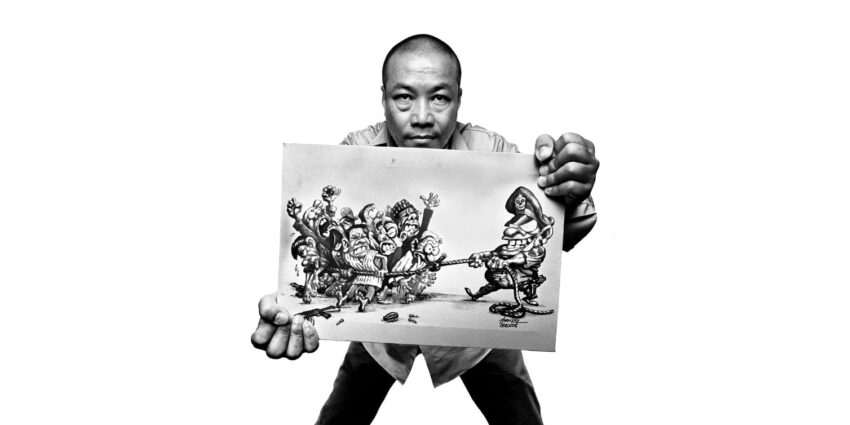
Harn Lay, Defiant Cartoonist
“Harn Lay, who came to prominence with The Irrawaddy’s satirical editorial cartoons targeting Myanmar’s previous military regime, died of liver cancer on Wednesday. He was 59,” reported the news website, founded by Burmese exiles living in Thailand.
The site wrote Feb. 9, “ ‘To me, art is for impression and cartoons are for expression,’ Harn Lay once said. He called cartoonists revolutionaries. True to his word, when the latest coup came to Myanmar last year, he busied himself with satirizing regime leader Min Aung Hlaing and his associates, defying the military dictatorship with his cartoons until his death.”
Guillermo I. Martinez, Prominent Miami Voice
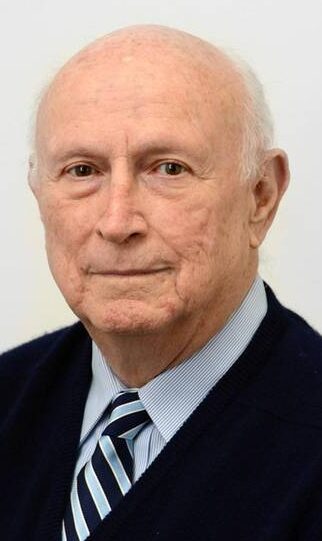 “Cuban-born South Florida journalist Guillermo I. Martinez (pictured), for decades a prominent and influential voice in both English and Spanish in television, radio and newspapers, has died,” Andres Viglucci reported Thursday for the Miami Herald.
“Cuban-born South Florida journalist Guillermo I. Martinez (pictured), for decades a prominent and influential voice in both English and Spanish in television, radio and newspapers, has died,” Andres Viglucci reported Thursday for the Miami Herald.
“Martinez, a former reporter and editorial board member at the Miami Herald, died Sunday in Miami. He was 80. Friends said the cause of death was cancer.
“Equally at home writing and speaking in Spanish and English, Martinez was a pioneering and unifying force in local journalism, bridging the gap between Spanish-language media focused primarily on Cuban exiles and mainstream news outlets like the Herald, which was late in responding to the rapidly changing news audience in Miami.
“While at the Herald, Martinez recruited a cadre of Hispanic journalists for its staff, opening the door to mainstream careers in English-language media for many and helping to significantly broaden the newspaper’s coverage of Miami, the Cuban exile and Hispanic community in both its news and editorial pages. . . .”
Jay Price, Radio Man and Newspaper Founder
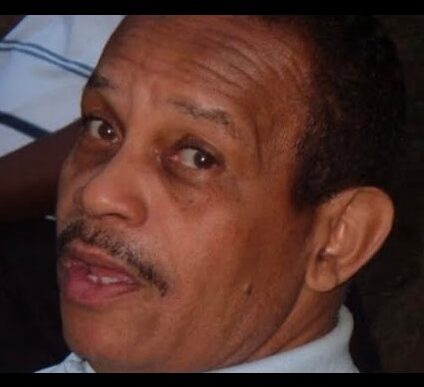 “Jay Price, (pictured) a Black journalist who made his mark in both radio and newspapers, has died. He was 73,” Larry Wallace reported Feb. 10 for WSYM-TV in Lansing, Mich. No cause of death was reported, and the family did not respond to inquiries.
“Jay Price, (pictured) a Black journalist who made his mark in both radio and newspapers, has died. He was 73,” Larry Wallace reported Feb. 10 for WSYM-TV in Lansing, Mich. No cause of death was reported, and the family did not respond to inquiries.
“Price worked as a journalist for more than 50 years, starting his career in radio in the 1970s.
“Price’s radio career took him to several markets, including Lansing, where he was a DJ. . . .
“In 1986, Price started The Chronicle News, a newspaper that tells stories about Black people from the perspective of Black people. . . .”
Price’s daughter Yancie Jackson “said Price decided to start the newspaper during the war on drugs, a time when Black people were often portrayed negatively.
“That was a story or that was a narrative that we had no control over,” Jackson told Wallace. “This was something that was started so that we can control the narrative and let people know, ‘This is who we really are.” ”
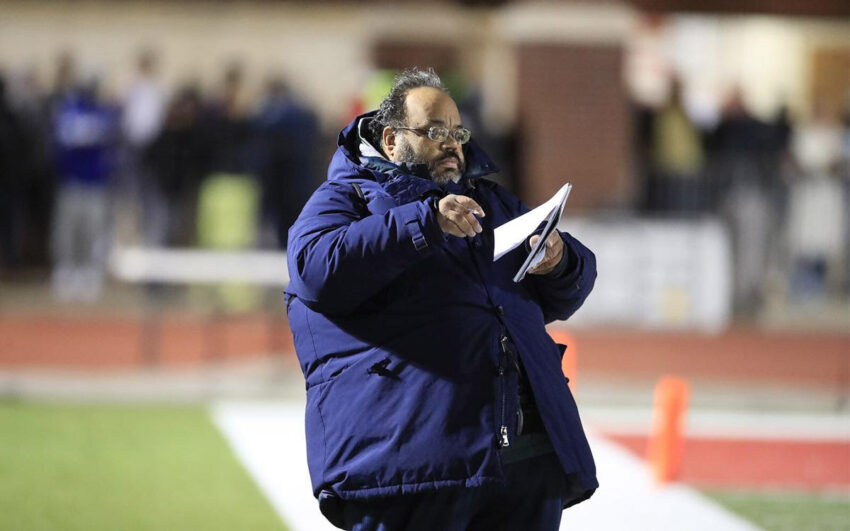
Miguel Rodriguez, a Face of COVID
“It didn’t matter what season it was, what sport it was or what was on the line. High school coaches across Western New York all agreed: When Miguel Rodriguez showed up, it was a big event,“ James Wojtanik wrote Feb. 1 for the Buffalo News.
” ‘Miguel was the face of The News to high school athletes, coaches and parents across Western New York,’ said Buffalo News Editor Mike Connelly. ‘He was such a nice person and a great ambassador. We will miss him.’ . . .
“Rodriguez, the high school sports reporter for The Buffalo News and a member of The News’ staff in various roles since 2003, died Monday in Millard Fillmore Suburban Hospital of complications from Covid-19. He was 47.”
Writing in the Washington Post, media critic Margaret Sullivan, former Buffalo News editor, used Rodriguez as an example of the dangers of misinformation from Spotify podcaster Joe Rogan and others. “He was overweight and asthmatic; in other words, very much at risk. And he was unvaccinated,” Sullivan wrote Feb. 6.
“I don’t know for sure whether getting vaccination and booster shots would have saved Miggy’s life. And I have no idea whether he had ever listened to Joe Rogan’s podcast, or what his precise reasons were for not being vaccinated.
“But I have talked to many of his co-workers and friends over the past week, briefly to his mother, and, at some length, to his father. What I’ve gleaned is that friends had been pushing him to get vaccinated for months but that he and his family hadn’t been convinced that it was wise or necessary.
“ ‘We were skeptical about the vaccine because it was so new,’ his father, John Davidson, told me. Now, given all that has happened and particularly because of his son’s preexisting conditions, he believes that was wrong. Miguel had been thinking seriously about getting an initial shot when he got sick in late December, his father said. . . .”
Short Takes
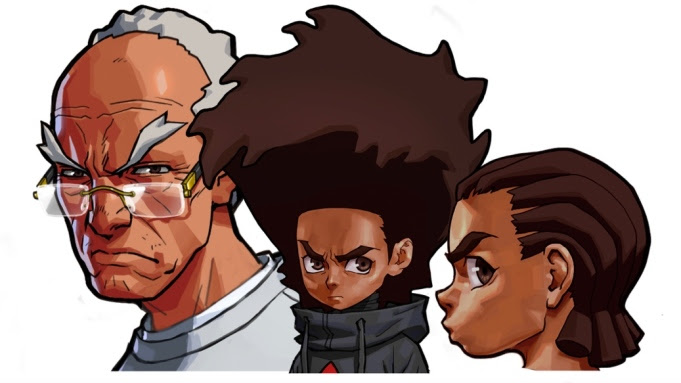
- “Huey and Riley Freeman will not make their return to screen,” Alexandra Del Rosario reported Feb. 4 for Deadline. “The Boondocks reboot series is no longer a go at HBO Max, Deadline can confirm. In 2019, HBO Max had given a two-season, 24-episode order to the beloved satire animated series from creator Aaron McGruder and Sony Pictures Animation. The series was set to launch in fall 2020 with a 50-minute special. . . . Sony is currently evaluating other options for the project, sources said.”
- “Roland S. Martin, award-winning journalist, host of the daily digital program #RolandMartinUnfiltered, and CEO of the newly-launched Black Star Network, is premiering four new shows on his OTT channel this week with two launching this week just in time for Black History Month,” the company announced. “Black Star Network is one of the only 100% Black-owned OTT [over the top] networks targeting African American consumers with politics, news and culture content,” the network announced Feb. 3.
- “Season 2 of our Ambie Award-winning podcast ‘The Heist,’ launching Feb. 22, confronts a centuries-long heist: the enormous wealth gap between Black and white Americans, and how a tenacious and entrepreneurial woman in Iowa is fighting back using the tools of the banking systems that helped perpetuate it,” writes Matt DeRienzo, editor in chief of the Center for Public Integrity.
- Outlining its priorities for the 117th Congress, the National Association of Broadcasters “noted that ‘the most impactful program to expand diversity in broadcast ownership – the Minority Tax Certificate Program – was eliminated by Congress in 1995. That program had provided tax incentives to those who sold their majority interests in broadcast stations to minorities, and broadcasters support legislation to reinstate it,’ ” George Winslow reported Friday for TV Tech. “ ‘Broadcasters support the Broadcast Ownership Opportunities Act (H.R. 4871) and the Broadcast Varied Ownership Incentives for Community Expanded Service Act, also known as the Broadcast VOICES Act (S. 2456), introduced in the House and Senate respectively during the 117th Congress,’ the NAB said. ‘Reinstating the Tax Certificate Program at the FCC would encourage investment in broadcast station ownership for women and people of color and dramatically help underrepresented voices realize their dreams of radio and television station ownership.’ ”
 “MSNBC and NBC News legal analyst Katie Phang (pictured) will host MSNBC Saturdays and Sundays from 7 a.m. to 8 a.m. ET, beginning April 9,” A.J. Katz reported Wednesday for TVNewser. “She will also debut a live show on Peacock’s The Choice from MSNBC on Thursdays and Fridays from 2 p.m. to 3 p.m. ET, beginning April 14. . . .”
“MSNBC and NBC News legal analyst Katie Phang (pictured) will host MSNBC Saturdays and Sundays from 7 a.m. to 8 a.m. ET, beginning April 9,” A.J. Katz reported Wednesday for TVNewser. “She will also debut a live show on Peacock’s The Choice from MSNBC on Thursdays and Fridays from 2 p.m. to 3 p.m. ET, beginning April 14. . . .”
- “Gray Television said it plans to create the Gray Media Training Center in partnership with WLBT, its NBC affiliate in Jackson, Miss.,” Mark K. Miller reported Wednesday for TVNewser. “The center will educate and train students who attend Mississippi colleges and universities, with a focus on Historically Black Colleges and Universities in the state, namely Jackson State, Alcorn State, Mississippi Valley State, Rust College and Tougaloo College. . . .”
- “A partnership has been created for students interested in exploring multimedia career opportunities within the automotive industry,” Automotive Rhythms announced Feb. 9. “Through the Black Automotive Media Group (BAMG), minority students from Historically Black Colleges and Universities (HBCUs) will participate in a 10-week, field-credit academic program that’s comprised of virtual training and mentoring sessions also known as The Driving Force (TDF). TDF evolved following a series of discussions between automakers and BAMG members in 2020. Those conversations began with an effort to improve the diversity and inclusion of African American journalists covering the industry. . . . “
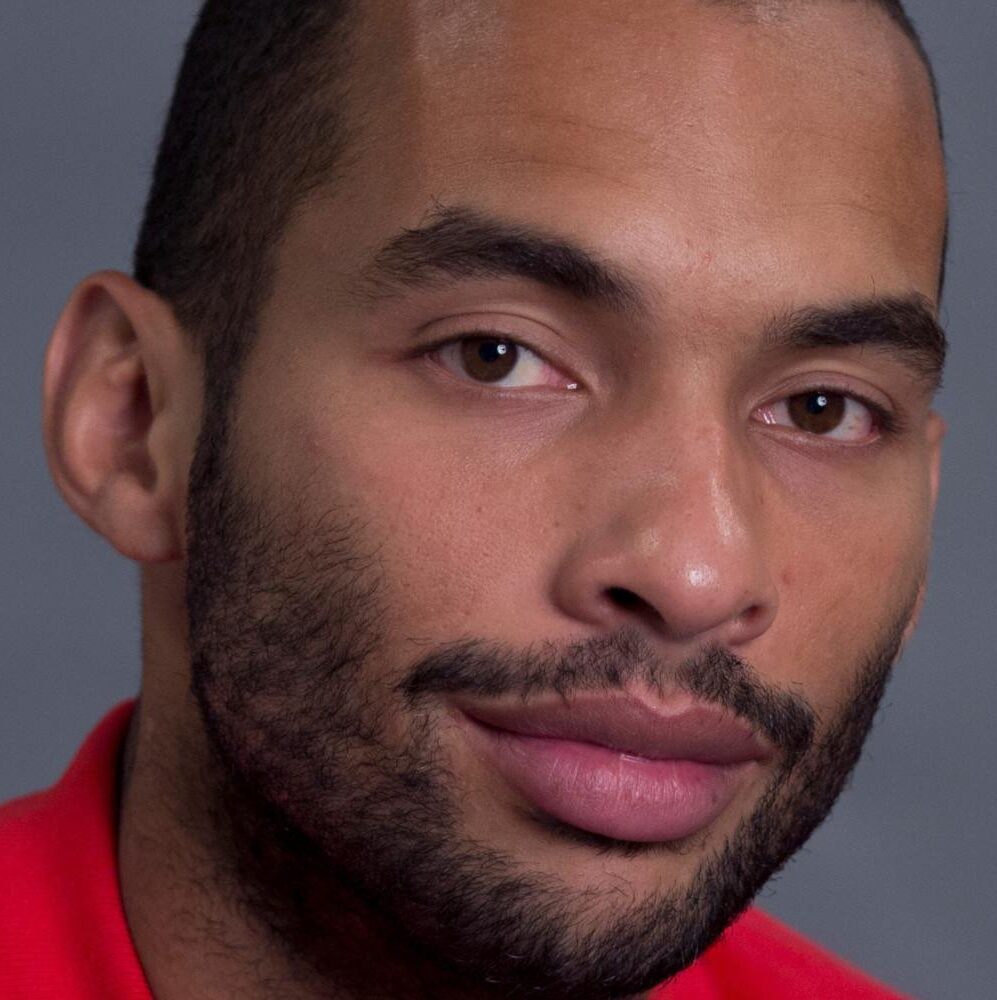 “Libor Jany, the Star Tribune’s award-winning Minneapolis public safety reporter, is leaving for the L.A. Times, according to a leaked internal memo to staffers, Racket, an alternative publication in Minneapolis, reported Wednesday. “The St. Paul native spent eight years at the paper covering cops, crime, and, often, the crimes committed by cops. Jany drove much of the reporting on George Floyd’s murder that’d win the Strib a 2021 Pulitzer Prize for breaking news; last year he was named Journalist of the Year by the National Association of Black Journalists. . . .”
“Libor Jany, the Star Tribune’s award-winning Minneapolis public safety reporter, is leaving for the L.A. Times, according to a leaked internal memo to staffers, Racket, an alternative publication in Minneapolis, reported Wednesday. “The St. Paul native spent eight years at the paper covering cops, crime, and, often, the crimes committed by cops. Jany drove much of the reporting on George Floyd’s murder that’d win the Strib a 2021 Pulitzer Prize for breaking news; last year he was named Journalist of the Year by the National Association of Black Journalists. . . .”
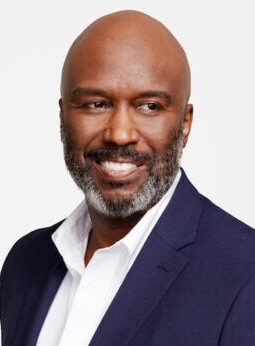 “WarnerMedia’s James Anderson (pictured) has been tapped to lead communications at CNN Worldwide after former chief marketing officer Allison Gollust resigned on Tuesday, according to an internal memo sent to staff Wednesday,” Katie Campione reported Wednesday for The Wrap. “Anderson will now serve as interim head of communications at the network in addition to his role as head of corporate communications and marketing at WarnerMedia. . . .”
“WarnerMedia’s James Anderson (pictured) has been tapped to lead communications at CNN Worldwide after former chief marketing officer Allison Gollust resigned on Tuesday, according to an internal memo sent to staff Wednesday,” Katie Campione reported Wednesday for The Wrap. “Anderson will now serve as interim head of communications at the network in addition to his role as head of corporate communications and marketing at WarnerMedia. . . .”
- The Native American Journalists Association is planning its 2023 National Native Media Conference for Winnipeg, Canada, home of its president, Francine Compton. This year’s conference is scheduled for Phoenix from Aug. 25 to 27. The National Association of Black Journalists and National Association of Hispanic Journalists plan a joint convention in Las Vegas Aug. 3-7 (pending local and CDC guidelines), with some portions online. The Asian American Journalists Association is set for an in-person convention in Los Angeles, July 27-30. Investigative Reporters & Editors announced Thursday a hybrid convention June 23-26 in Denver and online.

- Julian Brave NoiseCat, a member of the Canim Lake Band Tsq’escen, a descendant of the Lil’Wat Nation of Mount Currie, and a journalist currently based in the Pacific Northwest; and Ryan Christopher Jones, a Mexican-American photojournalist and anthropologist, have won the Heising-Simons Foundation’s 2022 American Mosaic Journalism Prize. The unrestricted cash prize of $100,000 per recipient, making it one of the largest dollar amounts given for a journalism prize in the United States, “is awarded to freelance journalists for excellence in long-form, narrative, or deep reporting about underrepresented and/or misrepresented groups in the American landscape,” the foundation said.
- “I am thrilled to tell you that 2022 will bring significant new investment in our journalism with more than 70 positions being added to the newsroom, plus additional resources in areas such as marketing that will extend the impact of our reporting and support The Post’s growth,” Executive Editor Sally Buzbee wrote Feb. 10 to Washington Post staffers. Coverage areas due for more attention are health and wellness, climate and weather, technology, Red State/Blue State America; threats to democracy including voting struggles in key battleground states; and the conversations and conflicts on American college campuses; and investigative work internationally.
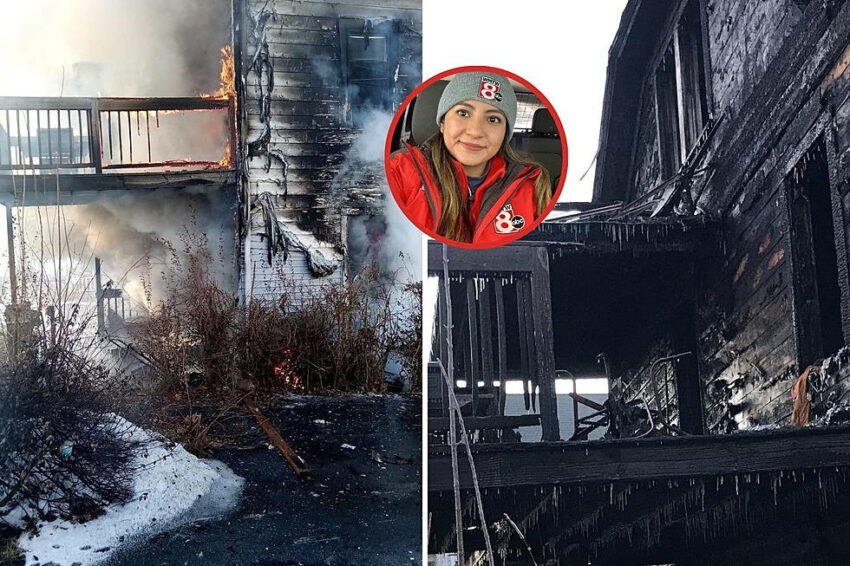
- “Adriana Sanchez is one of those reporters we’re loyal to — and right now, she needs our loyalty to help her family,” WHOM-FM in Portland, Maine, reported Tuesday. “Even though she’s from away, Adriana made Maine her home by way of Bristol, Connecticut — where her family still lives. Tragically, that same family is now without a place to live as of last night, when tragedy struck and a house fire broke out at the family’s 43 Murray Road home.” As of Sunday morning, Sanchez, a reporter at WMTW-TV in Portland, had raised more than $7,700 on the Go Fund Me page she created.
- “About a quarter of U.S. adults (23%) say they get news at least sometimes from podcasts, according to a Pew Research Center survey conducted in July 2021,” Mason Walker reported Tuesday for Pew. He also wrote, “Few differences exist across racial and ethnic groups. That is also true when it comes to political affiliation. Roughly a quarter of both Republicans and independents who lean toward the Republican Party, as well as Democrats and Democratic leaners, get news from podcasts (23% and 24%, respectively).”
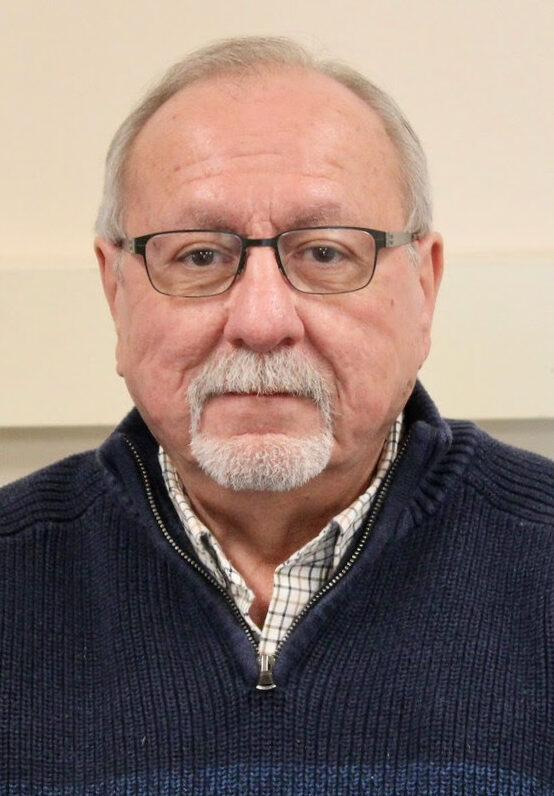 Veteran journalist O. Ricardo Pimentel (pictured) has joined the staff of the Milwaukee Neighborhood News Service as the newsroom’s first managing editor, Marquette University announced Feb. 3. Pimentel, who started Jan.31, has been editorial page editor of the San Antonio Express-News, editorial page editor for the Milwaukee Journal Sentinel and president of the National Association of Hispanic Journalists. “With the addition of Pimentel, editor Ron Smith will shift his focus to growing and sustaining NNS, which has covered Milwaukee’s communities of color for almost 11 years.” Follow-up
Veteran journalist O. Ricardo Pimentel (pictured) has joined the staff of the Milwaukee Neighborhood News Service as the newsroom’s first managing editor, Marquette University announced Feb. 3. Pimentel, who started Jan.31, has been editorial page editor of the San Antonio Express-News, editorial page editor for the Milwaukee Journal Sentinel and president of the National Association of Hispanic Journalists. “With the addition of Pimentel, editor Ron Smith will shift his focus to growing and sustaining NNS, which has covered Milwaukee’s communities of color for almost 11 years.” Follow-up
- Since the beginning of 2021, at least 25 newsroom staffers — about half — have left or given notice, at WHYY, the public radio station in Philadelphia, Harold Brubaker reported Thursday for the Philadelphia Inquirer, “most recently a string of editors, including the assistant news director and those who oversee the state-focused Keystone Crossroads and PlanPhilly, focused on neighborhoods.” Brubaker also wrote, “In interviews, 10 former and six current WHYY staffers cited lower pay than at other media outlets, a lack of opportunities for advancement, a haphazard emphasis on short news pieces to the detriment of longer stories that attracted them to public radio, and a feeling that management is not firmly committed to podcasts and other newer approaches to journalism. . . .”
 “Terry Tang (pictured) has been named editor of the Los Angeles Times editorial page, overseeing the editorial board and the Op-Ed and Sunday Opinion sections,” the Los Angeles Times announced Feb. 7. “Terry joined The Times in July 2019 as a deputy Op-Ed editor and was promoted to Op-Ed and Sunday Opinion editor in December 2020. Since last September she has served as acting editorial page editor and I’m delighted that she’s taking on the role permanently,” Patrick Soon-Shiong, executive chairman of the Times, said in a statement. “She worked at the New York Times for 20 years in many positions, including deputy editorial page editor, op-ed editor, editorial writer, deputy technology editor and metro major beats editor. She was also an editorial writer and columnist at the Seattle Times and a staff writer at the Seattle Weekly. . . .”
“Terry Tang (pictured) has been named editor of the Los Angeles Times editorial page, overseeing the editorial board and the Op-Ed and Sunday Opinion sections,” the Los Angeles Times announced Feb. 7. “Terry joined The Times in July 2019 as a deputy Op-Ed editor and was promoted to Op-Ed and Sunday Opinion editor in December 2020. Since last September she has served as acting editorial page editor and I’m delighted that she’s taking on the role permanently,” Patrick Soon-Shiong, executive chairman of the Times, said in a statement. “She worked at the New York Times for 20 years in many positions, including deputy editorial page editor, op-ed editor, editorial writer, deputy technology editor and metro major beats editor. She was also an editorial writer and columnist at the Seattle Times and a staff writer at the Seattle Weekly. . . .”
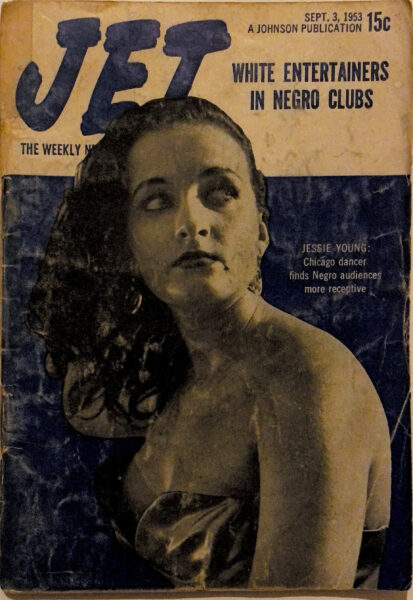
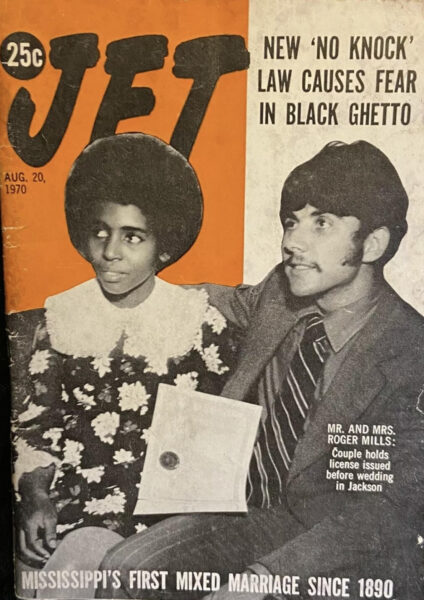
- Samir Husni, known as “Mr. Magazine,” has identified covers of Jet magazines featuring white people, perhaps contrary to our collective memory, he told Journal-isms. At top, a 1953 Jet cover line reads, “Jessie Young: Chicago dancer finds Negro audiences more receptive.” In 1970, Jet featured “Mississippi’s First Mixed Marriage Since 1890.” President John F. Kennedy was another white figure gracing the cover after his assassination in 1963. Most other whites were politicians as well. Husni is founder and director at Magazine Media Center and said he is studying and looking at all the “pocket” size magazines of that era. (Photos from the collection of Samir “Mr. Magazine” Husni”.)
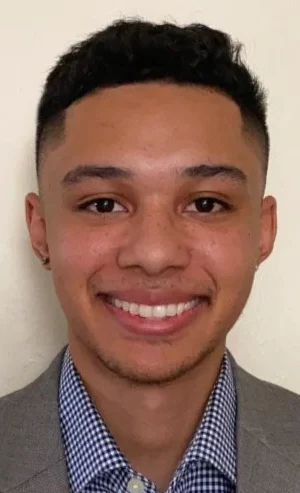 Arthur Cribbs (pictured), named Student Journalist of the Year by the National Association of Black Journalists in 2020, when he was a Howard University student, is joining The Washington Post “as a homepage editor on the night Hub team, where he will help curate the homepage to serve and grow our audience, craft engaging headlines and send push and email alerts,” the Post announced Feb. 4. Cribbs was a broadcast associate at MLB Network, and had internships and fellowships with Sony Pictures, ESPN’s The Undefeated, Axios and Fox Sports, working in film development, reporting, multimedia content creation and audience growth, the Post said.
Arthur Cribbs (pictured), named Student Journalist of the Year by the National Association of Black Journalists in 2020, when he was a Howard University student, is joining The Washington Post “as a homepage editor on the night Hub team, where he will help curate the homepage to serve and grow our audience, craft engaging headlines and send push and email alerts,” the Post announced Feb. 4. Cribbs was a broadcast associate at MLB Network, and had internships and fellowships with Sony Pictures, ESPN’s The Undefeated, Axios and Fox Sports, working in film development, reporting, multimedia content creation and audience growth, the Post said.
- Howard University’s Office of University Communications has launched its “premier destination for news and stories. The Dig: Howard’s News and Stories Hub is a new, multimedia hub for the latest news and stories popping up across campus.” Frank Tramble, Howard’s vice president and chief communications officer, messaged Journal-isms Friday, “There is no connection nor dissatisfaction associated with The Hilltop in the creation of this hub.” The Hilltop is a student-led “newspaper that covers news from the student perspective. The Dig is designed to upgrade our current newsroom (newsroom.howard.edu) and to be the main storytelling hub for various topics that tell . . . Howard’s stories across multiple groups from students, faculty, staff, alumni and friends. . . .”
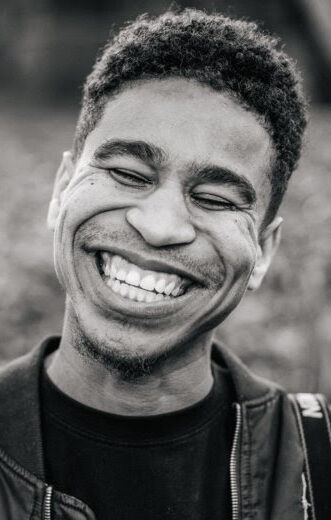 Brandon Bell (pictured), a news photographer at Getty Images, is among “25 under 35,” the “next generation of news professionals” chosen by Editor & Publisher. Bell, 29, told E&P, ” I’m a self-taught photographer who worked retail jobs and saved money to train myself as a journalist. I would stay up until 3 or 4 a.m. studying light and composition and then make it to class by 8 a.m. to begin my day. Not the greatest habit, but I did that for years. I couldn’t help myself. . . .” Bell has been the subject of pieces in The Atlantic and The Undefeated.
Brandon Bell (pictured), a news photographer at Getty Images, is among “25 under 35,” the “next generation of news professionals” chosen by Editor & Publisher. Bell, 29, told E&P, ” I’m a self-taught photographer who worked retail jobs and saved money to train myself as a journalist. I would stay up until 3 or 4 a.m. studying light and composition and then make it to class by 8 a.m. to begin my day. Not the greatest habit, but I did that for years. I couldn’t help myself. . . .” Bell has been the subject of pieces in The Atlantic and The Undefeated.
- When Fox News’ Tucker Carlson called Baltimore “one of the worst places in the Western Hemisphere. It’s a little bit of Haiti in the Mid-Atlantic,” the editorial board of the Baltimore Sun couldn’t let it pass. “Now, normally we would ignore such off-the-rails bloviation, as jaw-dropping as those words may be,” the board wrote Feb. 2. “One can almost feel the IQ points slipping away if you try to follow his reasoning down into the hidey hole of extremism. Tucker Carlson used to be a respected politically conservative writer working for respectable publications. He then went to Fox in 2009 and got rich by giving himself over to the Bill O’Reilly audience of disaffected white Americans looking for scapegoats. . . .”
 “Will Lee (pictured), an experienced media executive with a strong track record of digital innovations and brand transformation, who most recently served as SVP/Head of Digital, Entertainment Group at Meredith Corporation, will become NPR’s Chief Operating Officer,” John Lansing, president and CEO of NPR, announced Feb. 7. “The C-Suite is now 46% diverse thanks to the people Lansing has brought in and those of us he has promoted internally,” messaged spokesperson Isabel Lara.
“Will Lee (pictured), an experienced media executive with a strong track record of digital innovations and brand transformation, who most recently served as SVP/Head of Digital, Entertainment Group at Meredith Corporation, will become NPR’s Chief Operating Officer,” John Lansing, president and CEO of NPR, announced Feb. 7. “The C-Suite is now 46% diverse thanks to the people Lansing has brought in and those of us he has promoted internally,” messaged spokesperson Isabel Lara.
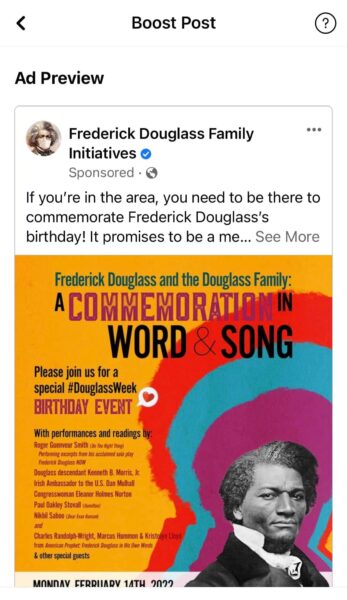
- A commemoration of Frederick Douglass’ Feb. 14 birthday proceeded without an ad on Facebook encouraging attendance. “It never was resolved with Facebook. They still won’t allow us to promote the event on their platform,” Kenneth B. Morris Jr., Douglass’ great-great-grandson messaged Journal-isms. The Facebook notice read, “Your ad may have been rejected because it mentions politicians or is about sensitive social issues that could influence public opinion, how people vote and may impact the outcome of an election or legislation. Our policy for running ads about social issue [cq], electoral or politics requires you to get authorized first by confirming your identity and creating a disclaimer that lists who is paying for the ads.” Morris said Thursday, “I didn’t respond to this because we are not a political organization, and the event didn’t fall into any of the categories noted. We advertise on Facebook frequently with Frederick Douglass and Booker T. Washington content. We have never run into any issues prior to this rejection. The event went great. We had an excellent turnout, and folk seemed to love the show! (video)
-
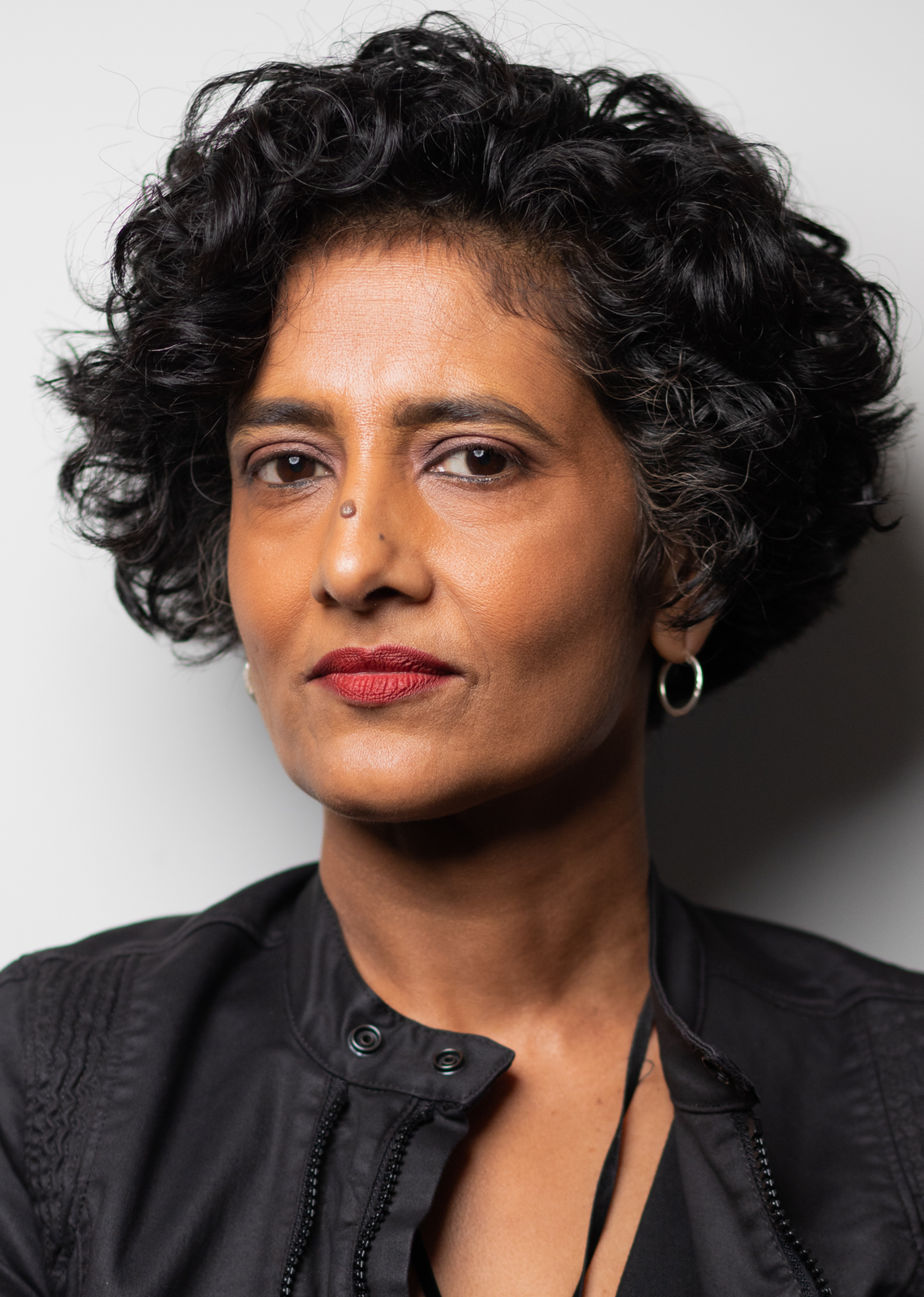 Somini Sengupta (pictured), a reporter at The New York Times for more than 20 years, becomes the new anchor for its Climate Fwd newsletter, the Times announced Feb. 9. She has “written stories from nearly 50 countries, covered 10 conflicts, written a book on India, dissected wonky diplomatic negotiations and hired both a camel and a donkey on assignment (two separate reporting trips). Her flak jacket is part of The New York Times Museum.”
Somini Sengupta (pictured), a reporter at The New York Times for more than 20 years, becomes the new anchor for its Climate Fwd newsletter, the Times announced Feb. 9. She has “written stories from nearly 50 countries, covered 10 conflicts, written a book on India, dissected wonky diplomatic negotiations and hired both a camel and a donkey on assignment (two separate reporting trips). Her flak jacket is part of The New York Times Museum.”
- “Former Atlanta Mayor Keisha Lance Bottoms is joining the ranks of CNN as a political commentator,” she announced Feb. 7, J.D. Capelouto, reported for the Atlanta Journal-Constitution.
- “It’s been nearly three years since former Virginia Lt Governor Justin Fairfax was accused by two women of sexual assault in February 2019. Lt. Gov Fairfax has adamantly denied the allegations and has yet to be criminally charged,” says BlackPressUSA TV, posting a video. Stacy Brown of the National Newspaper Publishers Association discusses “Journalist Integrity Vs The race to beat Twitter” with Lauren Victoria Burke, a writer who also worked with Fairfax; James Wright of the Washington Informer and Paris Brown, associate editor of the Baltimore Times.
- Washington Post reporter “Darran Simon passed away in April 2020, at the beginning of the pandemic,” the National Association of Black Journalists posted on Facebook. “For those who did not get an opportunity to gather and celebrate his life, family and friends will host a virtual memorial on March 19, 2022 from 1 p.m. to 3 p.m. EST. To RSVP for the memorial, visit RememberingDarranSimon.com. . . .”
- (
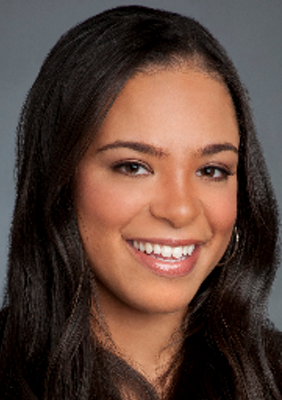 “Quiana Burns (pictured) is officially the executive producer of the Tamron Hall show,” Mark K. Miller wrote for TVNewsCheck. “ABC News President Kim Godwin announced the promotion Wednesday. Burns joined the syndicated daytime talk show in October as interim executive producer, and, Godwin said, “under her and Tamron’s leadership and vision, it has reached season highs in total viewership, performance in households and the women 25-54 demo, and received an NAACP Image Award nomination for Outstanding Talk Show.”
“Quiana Burns (pictured) is officially the executive producer of the Tamron Hall show,” Mark K. Miller wrote for TVNewsCheck. “ABC News President Kim Godwin announced the promotion Wednesday. Burns joined the syndicated daytime talk show in October as interim executive producer, and, Godwin said, “under her and Tamron’s leadership and vision, it has reached season highs in total viewership, performance in households and the women 25-54 demo, and received an NAACP Image Award nomination for Outstanding Talk Show.”
- “Former ESPN personalities (and frequent CNN guests) Cari Champion and Jemele Hill are joining CNN+ streaming service to co-host a weekly program that will cover sports, culture, entertainment and politics,” A.J. Katz reported Feb. 10 for TVNewser.
- “NBC O&O WMAQ Chicago has unveiled its latest original documentary, The Lost Story of Emmett Till: The Universal Child, which is available on Roku, Apple TV, Amazon Fire and NBCChicago.com,” Paul Greeley wrote Feb. 11 for TVNewsCheck. “Marion Brooks examines the 1955 lynching of a Black teenager from Chicago who was visiting relatives in Mississippi and how his murder impacted the Civil Rights Movement. So how did a globally known name – Emmett Till – quickly fade away from history books? How could Chicagoans forget the brutal torture of a 14-year-old boy? . . .”
- “The Scripps Howard Foundation, the philanthropic arm of The E.W. Scripps Co., in partnership with Scripps employees and audiences across the country and the Scripps and Howard families, gave $6.4 million in charitable gifts during 2021,” TVNewsCheck reported Feb. 3. “The Foundation’s Howard Centers for Investigative Journalism again produced groundbreaking work, including the University of Maryland Howard Center investigation into how white-owned newspapers incited racial violence for nearly 100 years and the Arizona State University Howard Center investigation into the lack of follow-through on child sex abuse cases on native American reservations;. . . . the Scripps Howard Emerging Journalists Program was launched in partnership with Elon University in North Carolina and the University of North Texas with the goal of inspiring high school students of diverse backgrounds to embark on journalism careers,” and “Dozens of students from a variety of universities and early career journalists from diverse backgrounds were awarded Scripps Howard internships, Scripps Howard fellowships in partnership with the Scripps Washington Bureau/Newsy and ProPublica, and Ted Scripps Fellowships in Environmental Journalism.”

- “Just one bag. Amid the basics,” many Afghan journalists who fled the country “made room for one or two non-essential, but wonderfully important things – like a jar of dirt — to remind them of their country, their family, or to ease their path ahead,” Matt Schofield wrote Feb. 10 for the Committee to Protect Journalists. “These objects had to be small, to ensure that the Taliban would overlook them as they searched the bags of people leaving the country. CPJ spoke with five Afghan journalists about what they brought with them as they settled into their new countries. . . . . “
- Does the state of Israel now endorse cancel culture? AP (1/31/22) disclosed that its government called on Amnesty International not to release a report (2/1/22) that defines that nation’s legal structure as a form of apartheid,” Ari Paul reported Feb. 3 for Fairness & Accuracy In Reporting. “Israeli Foreign Minister Yair Lapid said the report endorses ‘lies shared by terrorist organizations.’ CNN (2/1/22) covered the Amnesty report, leading with accusations of antisemitism, the sort of cheap slap that offers little substance but a lot of vitriol. Politico (2/1/22) led also with the report’s condemnation by Israeli officials and pro-Israel groups, not the findings of the report itself.”
- “Ethiopian authorities should drop any plans to charge two journalists, Amir Aman Kiyaro and Thomas Engida, with terrorism, stop a fresh investigation they are pursuing against editor Temerat Negara, and end the practice of punitively detaining journalists,” the Committee to Protect Journalists said Friday. Amir, a freelancer who contributes to The Associated Press; Thomas, a freelance camera operator who has worked with various outlets including private broadcaster LTV; and Temerat, co-founder of the online news outlet Terara Network, were among a group of journalists arrested in the weeks after November 2, 2021, when Ethiopian authorities declared a state of emergency amid an ongoing civil war . . .”
- Since its launch in 2018, Dubawa, a fact-checking nonprofit launched by the Centre for Journalism and Innovation Development, has been promoting a culture of fact-checking in Nigeria, Patrick Egwu reported Tuesday for the Reuters Institute. It does so “by building the capacities of Nigerian journalists through training and through forging strategic partnerships with media and civic organisations across West Africa. As an independent verification and fact-checking platform, guided by the five principles of the International Fact-Checking Network, Dubawa is focusing on improving media literacy, debunking misinformation, providing accurate information, and amplifying the culture of truth in journalism and public discourse in the region. . . . “
- “Authorities in Eswatini, formerly Swaziland, must immediately investigate the brutal assault by correctional officers on Nomthandazo Maseko, a reporter for the privately owned news website Swati Newsweek, and hold those responsible to account,” the Committee to Protect Journalists said Wednesday. “At noon on February 8, about 20 correctional services staff in Matsapha, a town about 22 miles from the capital Mbabane, assaulted the journalist, according to Maseko and her editor, Eugene Dube, who spoke to CPJ via messaging app, and a report by her employer. Maseko was assaulted after livestreaming a protest on Swati Newsweek’s Facebook page by members of the Swaziland Liberation Movement (Swalimo) activist group outside the local prison where two pro-democracy members of parliament have been detained since their arrest on July 25, 2021. . . .”
- Chadian authorities should thoroughly and transparently investigate the killing of journalist Evariste Djailoramdji and hold those responsible to account,” the Committee to Protect Journalist said Friday. “On February 9, unidentified people in the southern village of Sandana shot and killed Djailoramdji, a reporter working for the local broadcaster Lotiko Radio, while he covered a conflict in the area, according to local media reports and Arnaud Djimounoum, a manager at Lotiko Radio, who spoke to CPJ via messaging app.
To subscribe at no cost, please send an email to journal-isms+subscribe@groups.io and say who you are.
Facebook users: “Like” “Richard Prince’s Journal-isms” on Facebook.
Follow Richard Prince on Twitter @princeeditor
Richard Prince’s Journal-isms originates from Washington. It began in print before most of us knew what the internet was, and it would like to be referred to as a “column.” Any views expressed in the column are those of the person or organization quoted and not those of any other entity. Send tips, comments and concerns to Richard Prince at journal-isms+owner@
View previous columns (after Feb. 13, 2016).
View previous columns (before Feb. 13, 2016)
- Diversity’s Greatest Hits, 2018 (Jan. 4, 2019)
- Book Notes: Is Taking a Knee Really All That? (Dec. 20, 2018)
- Book Notes: Challenging ’45’ and Proudly Telling the Story (Dec. 18, 2018)
- Book Notes: Get Down With the Legends! (Dec. 11, 2018)
- Journalist Richard Prince w/Joe Madison (Sirius XM, April 18, 2018) (podcast)
- Richard Prince (journalist) (Wikipedia entry)
- February 2018 Podcast: Richard “Dick” Prince on the need for newsroom diversity (Gabriel Greschler, Student Press Law Center, Feb. 26, 2018)
- Diversity’s Greatest Hits, 2017 — Where Will They Take Us in the Year Ahead?
- Book Notes: Best Sellers, Uncovered Treasures, Overlooked History (Dec. 19, 2017)
- An advocate for diversity in the media is still pressing for representation, (Courtland Milloy, Washington Post, Nov. 28, 2017)
- Morgan Global Journalism Review: Journal-isms Journeys On (Aug. 31, 2017)
- Diversity’s Greatest Hits, 2016
- Book Notes: 16 Writers Dish About ‘Chelle,’ the First Lady
- Book Notes: From Coretta to Barack, and in Search of the Godfather
- Journal-isms’ Richard Prince Wants Your Ideas (FishbowlDC, Feb. 26, 2016)
- “JOURNAL-ISMS” IS LATEST TO BEAR BRUNT OF INDUSTRY’S ECONOMIC WOES (Feb. 19, 2016)
- Richard Prince with Charlayne Hunter-Gault, “PBS NewsHour,” “What stagnant diversity means for America’s newsrooms” (Dec. 15, 2015)
- Book Notes: Journalists Follow Their Passions
- Book Notes: Journalists Who Rocked Their World
- Book Notes: Hands Up! Read This!
- Book Notes: New Cosby Bio Looks Like a Best-Seller
- Journo-diversity advocate turns attention to Ezra Klein project (Erik Wemple, Washington Post, March 5, 2014)
When you shop @AmazonSmile, Amazon will make a donation to Journal-Isms Inc. https://t.co/OFkE3Gu0eK
— Richard Prince (@princeeditor) March 16, 2018

